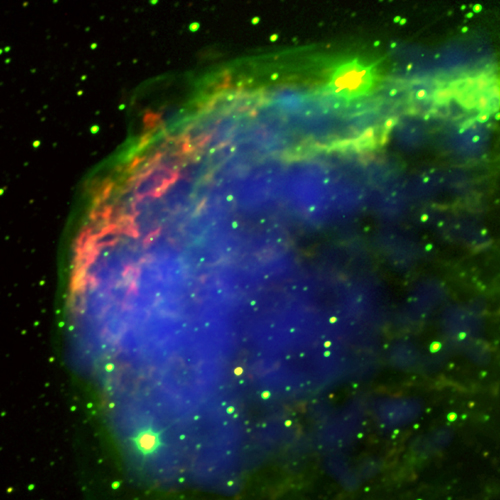The Crescent Nebula (NGC 6888): ): A gaseous shell
around a massive star about 5,000 light years from Earth in the constellation
Cygnus.
Caption: This composite X-ray (blue)/optical (red
and green) image reveals dramatic details of a portion of the Crescent Nebula.
About 400,000 years ago, the massive star HD 192163 (which is out of the
field of view to the lower right) expanded enormously to become a red giant
and ejected its outer layers at about 20,000 miles per hour. Two hundred
thousand years later, the intense radiation from the exposed hot, inner
layer of the star began pushing gas away at speeds in excess of 3 million
miles per hour! The collision of the high speed stellar wind with the slower
red giant wind compressed gas into a dense shell (red), and produced two
shock waves: an outward-moving shock that is visible at optical wavelengths
(green), and an inward-moving shock wave that created a bubble of two million
degrees Celsius X-ray emitting gas (blue). Because massive stars explode
as supernovas, knowledge of the environment around this star will help astronomers
better understand supernovas and their remnants.
Scale: Image is approx. 8.2 arcmin per side
Chandra X-ray
Observatory ACIS Image
|


